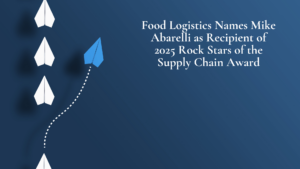A recent Food Logistics article by Brielle Jaekel reviewed the increased demand for third party logistics for functional beverages. “The demand for beverages that offer nutritional value or energy is increasing at exceptional rates, and with the Coronavirus diseasee (COVID-19) pandemic limiting consumers’ trips to the grocery store and ability to dine out, this growth has only escalated. According to a report from Research and Markets, before the outbreak hit, the functional beverage sector has been poised for a compound-growth rate of 11% from 2020 to 2024. Functional beverages are any form of beverage consumed with the notion of doing something specific for the body, including energy drinks, prebiotic and probiotics, special fruit and vegetables juices, sports drinks and CBD-based drinks. Their functions can range from providing alertness and energy to anxiety reduction.”
Michael Wohlwend, Managing Principal of Alpine Supply Chain Solutions, weighs in on how 3PLs will remain an integral part of the distribution process for functional beverage brands looking to scale and get closer to their customers.

“Given the growth and lack of historical order profiles, the unknown could result in unrealistic expectations between the manufacturer and the 3PL,” says Michael Wohlwend, managing principal at Alpine Solutions. “There will need to be a sliding scale with regard to the project, so that as the business grows and the demands grow, the 3PL can flex up to meet the demands.”
“Several 3PLs have or are about to invest in layer pick technology,” says Michael Wohlwend, managing principal at Alpine Solutions. “Rather than have a picker go to a location and pick cases of product, there are several different types of technology that allow for the picking of a layer or multiple layers of a pallet at one time.”
About Food Logistics Magazine
Food Logistics reaches more than 26,000 supply chain executives in the global food and beverage industries. The audience includes executives in the food sector (growers, producers, manufacturers, wholesalers and grocers) and the logistics section (transportation, warehousing, distribution, software and technology) who share a mutual interest in the operations and business aspects of the global food supply chain. Food Logistics, published 10 times a year, is the only magazine exclusively dedicated to covering the food and beverage supply chain, from the largest food manufacturers to retailers, distributors and food service providers. Food Logistics is an excellent source of buyers in food and beverage manufacturing, producing, processing, retailing, distributing, restaurant and food service, warehousing, transportation, and storage.













